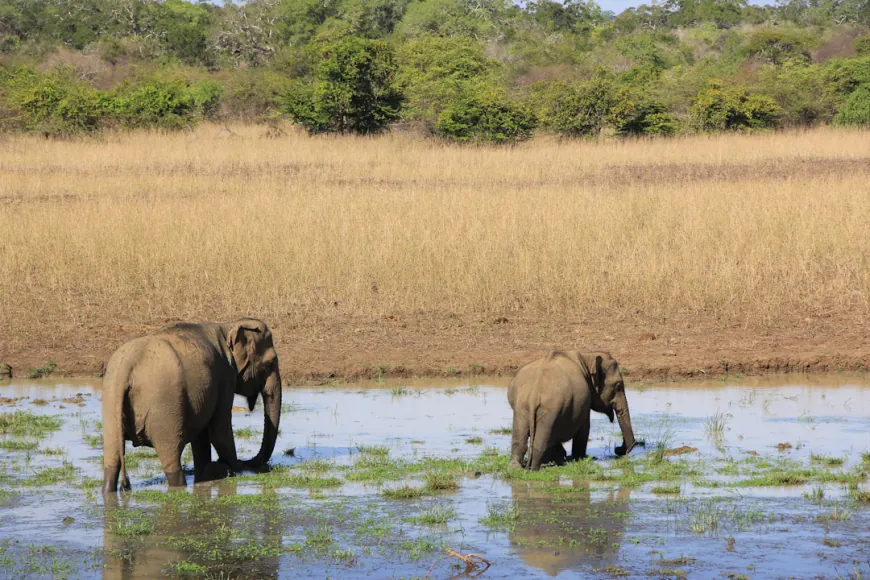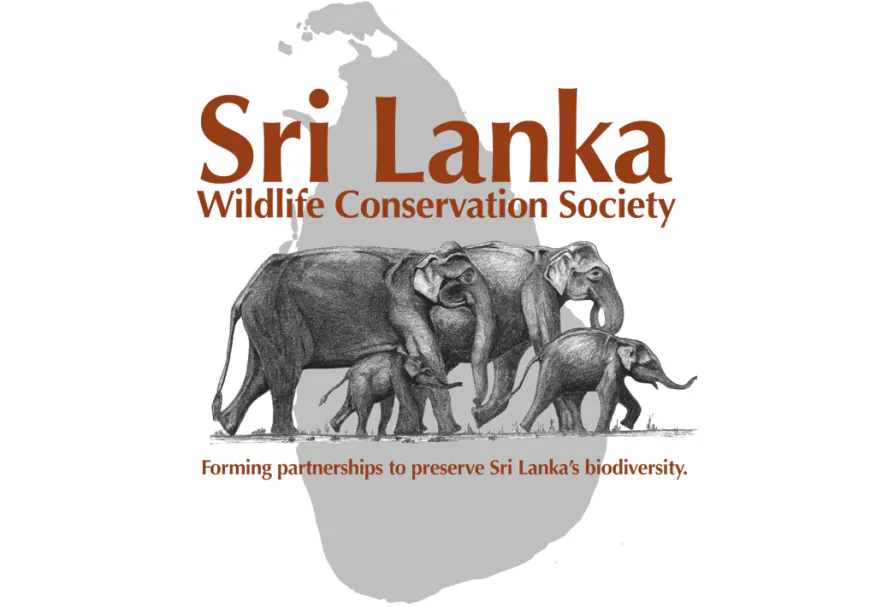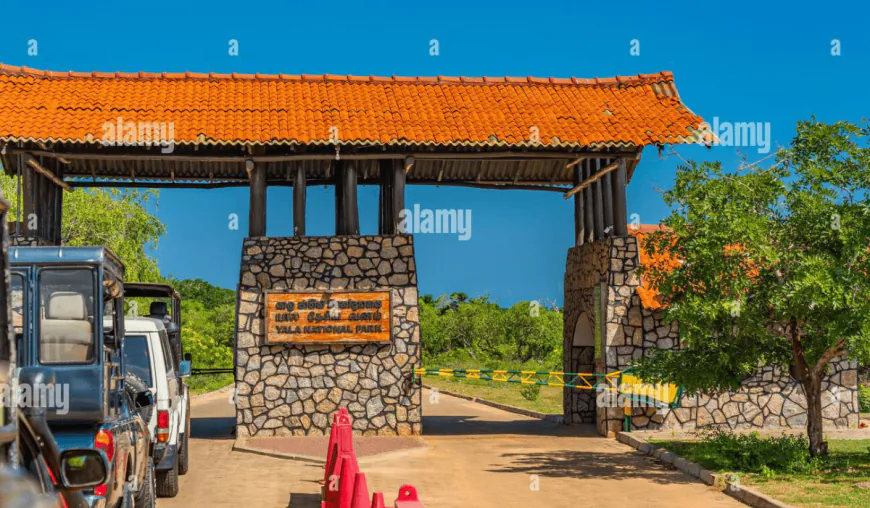Protecting Nature: Conservation Efforts at National Park Yala Sri Lanka
Explore the vital conservation efforts at National Park Yala Sri Lanka, focusing on anti-poaching measures and habitat restoration projects to preserve biodiversity.
-
Yala Conservation Efforts

Yala National Park, Sri Lanka's most visited and second largest national park, is a crucial conservation area for diverse wildlife, including Sri Lankan elephants, leopards, and numerous bird species. The park offers scientific, educational, recreational, and aesthetic opportunities to visitors while playing a vital role in biodiversity conservation and protecting important ecosystems.
-
Wildlife Conservation Overview

Wildlife conservation in Sri Lanka is of paramount importance due to the country's rich biodiversity and unique ecosystems. The Department of Wildlife Conservation (DWC) plays a crucial role in preserving Sri Lanka's natural heritage, managing over 13% of the island's total land area as protected wildlife reservations. These areas include vital water sources for major rivers and catchment areas for 40 major reservoirs, highlighting the ecological significance of conservation efforts.
Key conservation strategies in Sri Lanka include the establishment and management of protected areas, research initiatives, and community engagement. The Wildlife and Nature Protection Society (WNPS) of Sri Lanka, one of the oldest conservation organizations in the world, has been instrumental in setting up national parks like Wilpattu and Yala. The Sri Lanka Wildlife Conservation Society collaborates with communities to address environmental, social, and economic issues impacting wildlife and people. Additionally, organizations like the Wilderness and Wildlife Conservation Trust (WWCT) conduct ecological research and raise awareness to maintain peaceful human-wildlife coexistence. National parks, such as Yala, serve as critical habitats for endangered species like the Sri Lankan leopard and Asian elephant, contributing significantly to biodiversity preservation and ecosystem protection.
-
Anti-Poaching and Habitat Restoration

Yala National Park implements several conservation initiatives to protect its diverse wildlife and ecosystems. The following table outlines key anti-poaching measures and habitat restoration projects undertaken by the park:
Conservation Initiative Description Anti-poaching patrols Regular patrols by wildlife officers to detect and deter poaching activities Community engagement Programs to involve local communities in conservation efforts and provide alternative livelihoods Wildlife monitoring Tracking population trends of key species like Sri Lankan leopards to inform conservation strategies Habitat preservation Efforts to maintain and protect natural environments crucial for wildlife survival Fencing and shelters Installation of protective structures to minimize human-wildlife conflict Education programs Initiatives to raise awareness about wildlife conservation among local populations and visitors Anti-poaching measures at Yala National Park are crucial for protecting its diverse wildlife, particularly iconic species like elephants and leopards. The Department of Wildlife Conservation (DWC) faces challenges in implementing these measures due to limited manpower, training, and funding. However, the park has strengthened its efforts to combat poaching, especially during periods of reduced tourism when opportunities for illegal hunting may increase.
The impact of anti-poaching measures is significant. For instance, the leopard population in Yala has been stabilized in recent years due to enhanced protection efforts. These initiatives not only safeguard individual animals but also help maintain the ecological balance within the park.
Habitat restoration projects are equally important for the long-term conservation of Yala's ecosystems. These projects focus on preserving and rehabilitating various habitats within the park, including forests, grasslands, and wetlands. By maintaining healthy ecosystems, these efforts support the diverse flora and fauna that call Yala home.
The importance of habitat restoration cannot be overstated. It provides essential resources for wildlife, including food, shelter, and breeding grounds. For example, maintaining water sources is crucial for supporting elephant populations and other species during dry seasons. Additionally, restored habitats can act as buffers against human encroachment and help mitigate human-wildlife conflicts.
Yala National Park also collaborates with international and local conservation organizations to enhance its conservation efforts. Partnerships with groups like the Wildlife Conservation Society and World Wildlife Fund provide technical expertise, funding, and support for awareness campaigns. These collaborations strengthen the park's ability to implement effective conservation strategies and address complex challenges in wildlife protection.
Despite these efforts, Yala faces ongoing challenges in wildlife conservation. The expansion of human settlements, agricultural land use, and increased tourism pose threats to natural habitats. Balancing conservation needs with economic development and tourism remains a significant challenge for park management.
To address these issues, Yala continues to adapt its conservation strategies. This includes implementing sustainable tourism practices, regulating visitor numbers, and ensuring responsible wildlife viewing to minimize environmental impact. By combining anti-poaching measures, habitat restoration, community engagement, and sustainable tourism practices, Yala National Park strives to protect its unique biodiversity for future generations.
-
Conservation Stakeholders and Partners
The Department of Wildlife Conservation (DWC) plays a central role in Sri Lanka's wildlife conservation efforts, working alongside various NGOs and local groups to protect the country's rich biodiversity. Here's an overview of key organizations involved in wildlife conservation in Sri Lanka:
Organization Role and Initiatives Department of Wildlife Conservation (DWC) - Manages protected areas and wildlife reserves
- Develops national strategies for wildlife conservation
- Enforces wildlife protection laws
- Conducts research and monitoring programsWildlife and Nature Protection Society (WNPS) - One of the oldest conservation organizations globally
- Instrumental in establishing national parks like Wilpattu and Yala
- Conducts awareness programs and conservation projectsSri Lanka Wildlife Conservation Society - Collaborates with communities on environmental and social issues
- Implements human-elephant conflict mitigation programsWilderness and Wildlife Conservation Trust (WWCT) - Conducts ecological research
- Raises awareness for human-wildlife coexistenceDilmah Conservation - Supports elephant conservation initiatives
- Sponsors care for orphaned elephants at Udawalawe Elephant Transit HomeThe Department of Wildlife Conservation, established in 1949, is the primary government agency responsible for wildlife conservation in Sri Lanka. Its mission is "To conserve wildlife and nature by the sustainable utilization of men, material, and land through participatory management, research, education, and law enforcement and ensure the maintenance of biodiversity and forest cover as exist today." The DWC manages over 13% of Sri Lanka's total land area as protected wildlife reservations, including critical water sources and catchment areas.
Key initiatives of the DWC include:
- Developing national strategies and plans for wildlife conservation
- Protecting and managing ecosystems, including sites of special scientific interest
- Implementing species recovery plans for endangered species
- Promoting eco-tourism in protected areas
- Facilitating research and education in wildlife conservation
The DWC collaborates with various organizations and stakeholders to enhance its conservation efforts. For instance, it works with international bodies like the UNESCO Man and Biosphere (MAB) Programme and adheres to conventions such as CITES (Convention on International Trade in Endangered Species).
Non-governmental organizations (NGOs) and local groups play a crucial role in supporting and complementing the DWC's efforts. The Wildlife and Nature Protection Society (WNPS), one of the world's oldest conservation organizations, has been instrumental in establishing national parks and continues to conduct awareness programs and conservation projects.
The Sri Lanka Wildlife Conservation Society focuses on community-based conservation, addressing environmental, social, and economic issues that impact both wildlife and people. Their initiatives include human-elephant conflict mitigation programs, which are crucial for conservation in areas like Yala National Park.
Dilmah Conservation, a corporate initiative, supports elephant conservation by assisting the Elephant Transit Home in Udawalawe National Park. They sponsor the care of orphaned elephants and work on raising awareness about elephant conservation. This partnership demonstrates how private sector entities can contribute to wildlife conservation efforts.
These organizations often collaborate on projects, combining their expertise and resources. For example, the Wilderness and Wildlife Conservation Trust (WWCT) conducts ecological research and awareness programs that complement the DWC's management efforts in protected areas like Yala National Park.
Despite these collaborative efforts, challenges remain in wildlife conservation. These include limited resources, human-wildlife conflict, and balancing conservation needs with economic development. Ongoing cooperation between government agencies, NGOs, local communities, and the private sector is crucial for addressing these challenges and ensuring the long-term protection of Sri Lanka's wildlife.
What's Your Reaction?








































